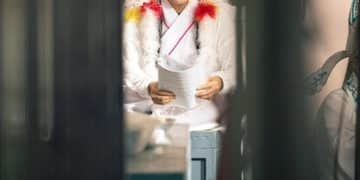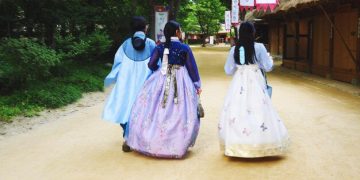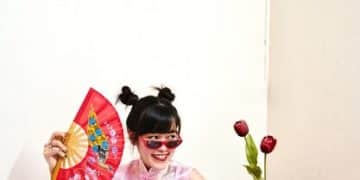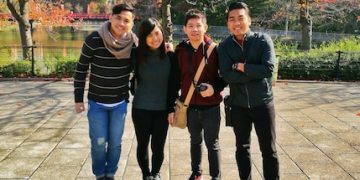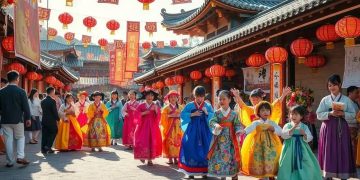Understanding Seollal: Korean New Year Celebrations in the US
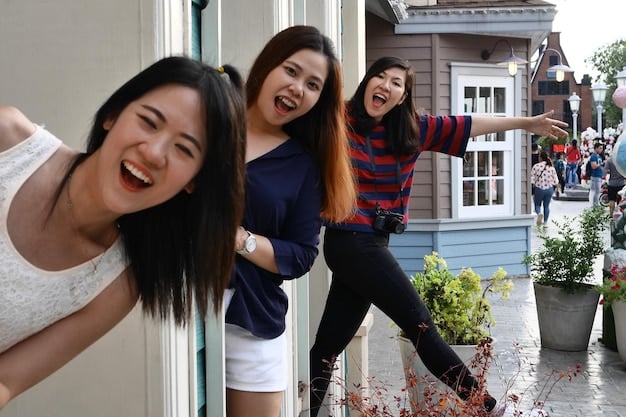
Seollal, the Korean New Year, holds deep cultural significance in the US, representing a time for ancestral veneration, family reunions, and traditional customs that connect Korean Americans to their heritage and foster community spirit.
Celebrating cultural heritage is a vital part of maintaining identity outside one’s homeland, and Understanding the Significance of Seollal (Korean New Year) Celebrations in the US offers valuable insights into how Korean Americans preserve traditions and foster community ties.
What is Seollal? A Cultural Overview
Seollal, also known as Korean Lunar New Year, is one of the most significant holidays in Korea and among the Korean diaspora. Understanding its roots is key to Understanding the Significance of Seollal (Korean New Year) Celebrations in the US.
Seollal is more than just a new year; it’s a celebration steeped in tradition, family, and respect for ancestors. The holiday typically falls in January or February, coinciding with the second new moon after the winter solstice.
Historical and Cultural Importance
Seollal has been celebrated for centuries, with roots tracing back to ancient agricultural societies in Korea. The holiday marks the beginning of the lunar cycle and the arrival of spring, symbolizing renewal and new beginnings.
Traditionally, Seollal was a time for families to gather, perform ancestral rites (Charye), and enjoy special foods like Tteokguk (rice cake soup). These customs remain vital components of Seollal observances today which allows for a deeper Understanding the Significance of Seollal (Korean New Year) Celebrations in the US.
Key Traditions and Customs
- Charye (Ancestral Rites): A formal ceremony honoring ancestors with offerings of food and drink.
- Sebae (New Year’s Bow): A deep traditional bow performed by children to elders to wish them good fortune in the new year, in exchange for Sebaetdon (New Year’s money).
- Tteokguk (Rice Cake Soup): A traditional soup made with sliced rice cakes, symbolizing good luck and adding a year to one’s age.
- Folk Games: Traditional games like Yut Nori (a board game) and kite flying are enjoyed by families during Seollal.
Seollal symbolizes much more than transitioning to a new year. It acts as a means of cultural preservation for many Korean communities outside of Korea, and is integral for Understanding the Significance of Seollal (Korean New Year) Celebrations in the US.
The Korean Diaspora: Seollal in the US
As Korean immigrants settled in the US, they brought their traditions with them, including Seollal. The holiday serves as a crucial link to their cultural heritage, creating a sense of community and belonging.
Understanding the Significance of Seollal (Korean New Year) Celebrations in the US means recognizing the challenges and adaptations faced by Korean Americans in maintaining these traditions.
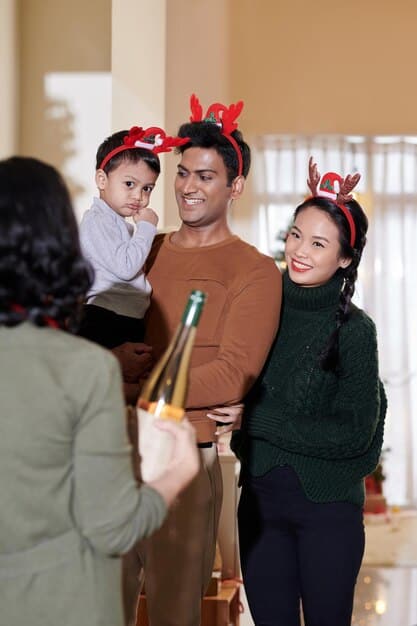
Maintaining Cultural Identity
Seollal celebrations in the US are often organized by community centers, Korean churches, and cultural organizations. These events provide a space for Korean Americans to come together, share traditions, and pass them on to younger generations.
Cultural identity is preserved through traditional foods, performances, and educational programs. Many Korean American families observe Seollal to reinforce their roots in the US.
Adaptations and Innovations
Seollal celebrations in the US often blend traditional customs with modern influences. For example, while Charye is still practiced by some families, others may adapt the ceremony to fit their lifestyles and available resources.
Another common adaptation for those Understanding the Significance of Seollal (Korean New Year) Celebrations in the US, is that many may also include elements from American culture, creating a unique fusion of traditions. For example, it is not uncommon to include American desserts or snacks alongside the traditional Korean foods.
Often, there will be various activities that pay respect to both cultures such as Korean folk dancing, traditional Korean musical performances, and even K-pop dance performances.
As such, the various adaptations and innovations have allowed Korean Americans to tailor the holiday to their specific tastes, needs and cultural context.
Community and Family: Core Pillars of Seollal in the US
Community and family are at the very heart of Seollal. In the US, these aspects take on even greater importance as Korean Americans seek to maintain strong connections with their heritage and each other.
Understanding the Significance of Seollal (Korean New Year) Celebrations in the US goes hand in hand with understanding the role of community and family.
Strengthening Family Bonds
Seollal is a time for families to come together, often traveling long distances to be with loved ones. This reunion is an opportunity to strengthen family bonds, share stories, and pass on cultural knowledge.
Elders are particularly revered during Seollal, and younger generations show respect by performing Sebae and offering gifts. A core factor that allows for Understanding the Significance of Seollal (Korean New Year) Celebrations in the US, depends on understanding the respect given to family elders.
Building Community Connections
Korean American communities often organize large-scale Seollal celebrations that bring together people from all walks of life. These events feature traditional food stalls, cultural performances, and activities for children and adults.
Through food and activities everyone is given the opportunity to interact with peers and elders, strengthening communual connection. Moreover, Understanding the Significance of Seollal (Korean New Year) Celebrations in the US for a Korean American community depends on community outreach and engagement.
Cultural organizations and churches play a vital role in organizing these events, providing a platform for Korean Americans to connect with their heritage and build relationships with one another.
Furthermore, many Korean holidays, such as Seollal provide a foundation for promoting inclusivity and diversity in the community.
Seollal Foods: A Culinary Journey
Food plays a central role in Seollal celebrations, representing abundance, luck, and prosperity for the new year. Traditional Seollal dishes are carefully prepared and shared among family and friends.
Learning about these foods offers a more rounded Understanding the Significance of Seollal (Korean New Year) Celebrations in the US.
Essential Seollal Dishes
These dishes typically shared among friends and family each carry a significance of bringing good luck, wealth, and future health to those who enjoy. Some dishes include the following:
- Tteokguk (Rice Cake Soup): The most iconic Seollal dish, Tteokguk is a savory soup made with sliced rice cakes, beef broth, and vegetables. The white rice cakes symbolize purity and new beginnings.
- Japchae (Glass Noodles): A colorful dish made with stir-fried glass noodles, vegetables, and meat. Japchae is often served at celebrations and symbolizes good luck and happiness.
- Jeon (Korean Pancakes): Savory pancakes made with various ingredients like seafood, vegetables, and meat. Jeon is a popular appetizer or side dish during Seollal.
- Galbijjim (Braised Short Ribs): A rich and flavorful dish made with braised short ribs, vegetables, and a sweet and savory sauce. Galbijjim is often served at special occasions and represents abundance and prosperity.
Symbolism and Preparation
Food plays a vital role in conveying the culture to the next generation. By being able to Understanding the Significance of Seollal (Korean New Year) Celebrations in the US, one can gain insight to the underlying cultural values attributed with traditional cooking.
The act of preparing Seollal dishes is often a family affair, with different generations working together to create these culinary masterpieces. This shared experience strengthens family bonds and fosters a sense of cultural pride.
The dishes prepared and enjoyed during Seollal serve to emphasize themes of hope, happiness, and prosperity. By eating these foods, Korean Americans feel even more connected to the rich cultural history behind Understanding the Significance of Seollal (Korean New Year) Celebrations in the US.
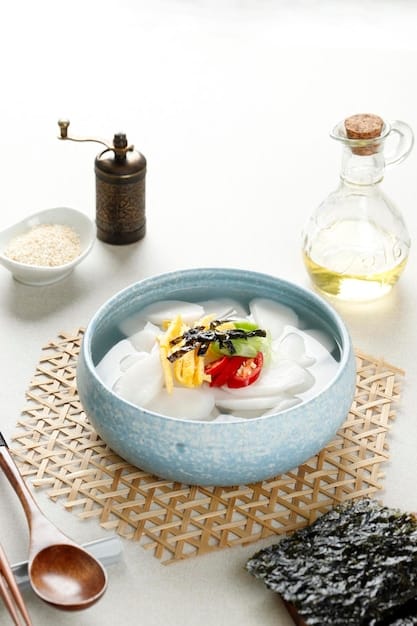
Passing Down Traditions: Seollal for Future Generations
One of the biggest challenges for Korean Americans is passing down their cultural heritage to future generations. Seollal provides an opportunity to reinforce these traditions and instill a sense of cultural identity in young people.
Understanding the Significance of Seollal (Korean New Year) Celebrations in the US includes educating future generations about the holiday’s history and customs.
Engaging the Younger Generation
Many Korean American parents make a conscious effort to involve their children in Seollal preparations, teaching them how to make traditional foods, perform Sebae, and play folk games. By engaging the younger generation, traditions have a higher liklihood of continuation for years to come.
Community centers and cultural organizations also offer educational programs and workshops for children and teenagers, teaching them about Korean history, language, and culture. As such, this allows for a deeper Understanding the Significance of Seollal (Korean New Year) Celebrations in the US.
Creating New Memories
While preserving traditional customs is important, Korean Americans also find ways to create new memories and traditions during Seollal. This may involve incorporating elements of American culture or adapting the holiday to fit their lifestyles.
By creating new memories during Seollal, Korean Americans are ensuring that the holiday remains relevant and meaningful for future generations. If Seollal celebrations aren’t regularly updated, then one may run the risk of lowering the significance of tradition behind Understanding the Significance of Seollal (Korean New Year) Celebrations in the US.
As children grow up celebrating Seollal in all its various forms, the sense of cultural roots and community is strengthened. This serves to create a foundation that will impact generations to come.
The Future of Seollal in the US: Challenges and Opportunities
As the Korean American community continues to evolve, Seollal celebrations will undoubtedly face new challenges and opportunities. Maintaining cultural relevance in a rapidly changing world requires creativity, adaptability, and a strong sense of community.
Understanding the Significance of Seollal (Korean New Year) Celebrations in the US means recognizing both the challenges and the potential for growth.
Addressing Challenges
One of the biggest challenges is maintaining the authenticity of Seollal traditions while adapting them to modern lifestyles. For many Korean Americans, balancing their cultural heritage with their American identity can be difficult.
Another challenge is ensuring that Seollal celebrations remain inclusive and accessible to all members of the Korean American community. By including members from across all backgrounds, it promotes greater Understanding the Significance of Seollal (Korean New Year) Celebrations in the US.
Seizing Opportunities
Despite these challenges, there are also many opportunities for Seollal celebrations to thrive in the US. One opportunity lies in leveraging technology and social media to connect with Korean Americans across the country and around the world.
Another opportunity is to partner with local businesses and organizations to promote Seollal celebrations and raise awareness about Korean culture. Promoting Korean culture will only assist with Understanding the Significance of Seollal (Korean New Year) Celebrations in the US.
By embracing innovation and collaboration, Korean Americans can ensure that Seollal remains a vibrant and meaningful tradition for generations to come.
| Key Highlight | Brief Description |
|---|---|
| 🎉 Cultural Significance | Seollal preserves Korean heritage in the US, fostering community. |
| 👨👩👧👦 Family & Community | Strengthens bonds through traditions like ancestral rites and shared meals. |
| 🍲 Traditional Foods | Dishes like Tteokguk symbolize luck and prosperity for the New Year. |
| 🌱 Future Generations | Passing down customs ensures Seollal’s continued relevance and celebration. |
Frequently Asked Questions
▼
Seollal is primarily celebrated to honor ancestors and welcome the new year with family. It is a time for showing respect to elders and sharing blessings and good fortune.
▼
Korean Americans celebrate Seollal by gathering with family. They pay respect to ancestors with traditional foods such as tteokguk. Often these celebrations take place within the community.
▼
Sebae is a traditional deep bow performed by children as a show of respect for elders. In return, elders bless the children with words of wisdom and encouragement. It is a gesture of honor and gratitude.
▼
Tteokguk, or rice cake soup, is believed to bring good luck for the new year. It is also seen as a way of observing a cultural tradition. Many believe this dish can bring wealth and prospierity.
▼
Korean Americans preserve cultural traditions by teaching their children how to prepare foods, perform Sebae, and play folk games. In addition, local centers and cultural centers are often arranged to assist with the cultural lessons.
Conclusion
Seollal in the US is a testament to the resilience and adaptability of the Korean American community. By preserving their cultural heritage while embracing new opportunities, Korean Americans are ensuring that Seollal remains a vibrant and meaningful tradition for generations to come. By understanding and embracing this deep cultural value, you are Understanding the Significance of Seollal (Korean New Year) Celebrations in the US even further.
